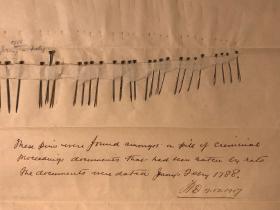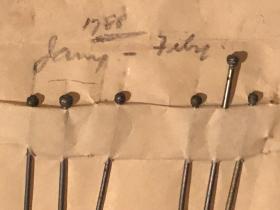What job is this?
Students explore the different types of trades or work experience convicts brought with them from their life in England.
This is the student activity 1 of 6 of the Work to be done learning activity.

What job is this?
You would need to be careful using the word ‘job’ back in 1788 as it meant something different in the secret language spoken by the convicts called ‘flash’. Flash language was a criminal slang spoken in England that the convicts brought with them out to the new colony, and it was not understood by those in authority as it was a secret language! A ‘job’ in flash language means a robbery! [For further information go to the Talkin’ Like a Convict Learning Activity.]
In 1788 there were 80 different trades listed for the convicts onboard the First Fleet. The surgeon on the HMS Sirius, George Worgan, made a list of some of the ones that were likely to be of the most use to the colony:
Carpenters, Sawyers, Shingle makers, Stone Cutters, Masons, Brick Makers, and Black-Smiths.
Some of the less useful trades of the male and female convicts on the First Fleet included lace maker, lemon seller, ivory turner, jockey, watchcase maker and artificial flower maker!
Guess what these trades of the First Fleet are. What did they do? Who did this job, a man or a woman or either? [Explanations in Additional Information.]
- currier
- brazier
- milliner
- wheelwright
- tambour worker
- bitt maker
- pinheader
- button stamper
- fiddler
- leather breeches maker
- shoe binder
- furrier
- stay maker
- silk winder
- hawker
- hoop maker
- charwoman
- waterman
A blacksmith, a whitesmith and a silversmith also came out on the First Fleet. Research the difference between these trades and define the word smith.
Look at the pins, below, used in the colony in 1788 for keeping important documents together.


A pinheader, listed above, would have made pins like these in England by placing the spherical shaped heads on the pins. Notice the different shapes of the pin heads and length of the pins to indicate they are all handmade. Pins held colonial documents together in 1788 but rats liked to eat paper so all that was left of them were these actual pins.
Answer these questions:
- Some of the trades from the First Fleet convicts exist today such as carpenter and stonemason. How do you think those jobs might be different today?
- Are there any trades in the above list that don’t exist anymore? Why? Which ones do you think we should bring back? Why?
- Are there any trades that sound interesting to you? Which ones would you like to try?
- In a list of nearly 780 convicts, about 393 of them (HALF of the total!) listed their occupation as ‘none’. Why?
Write an advertisement for one of these jobs.